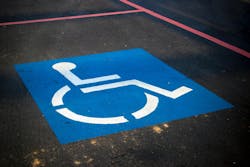Despite the passage of legislation to make homes more accessible to residents with disabilities decades ago, building investigation testers find "mixed" compliance in expensive New York City markets.
Accessibility testing in New York City has prompted federal prosecutors to bring cases against a "who’s who of New York City developers," such as the Durst Organization, Equity Residential, Glenwood Management, Related Companies, and TF Cornerstone. In most cases, settlements include developer promises to improve units and pay fines, and in other settlements, court-ordered complete retrofitting of occupied buildings have been required. Fred Freiberg, executive director of nonprofit Fair Housing Justice Center which leads building investigations with testers tells The New York Times that accessibility still has a long way to go in NYC, “Compliance is more the exception than the rule."
Developers say the laws are outdated, confusing and overly broad. But while they may not always be installing bedroom doors that are wide enough or easy-to-reach electrical outlets, their high-rises often are nonetheless informed by accessibility design.
The open kitchens, stall showers and spacious baths found in so many pricey new towers often have accessibility laws to thank for their existence. “The requirements, in a way, create more luxurious spaces,” said Brett Harris, a founding principal of AKI, a developer of Queens rentals. “The idea has been to use them to our advantage.”
